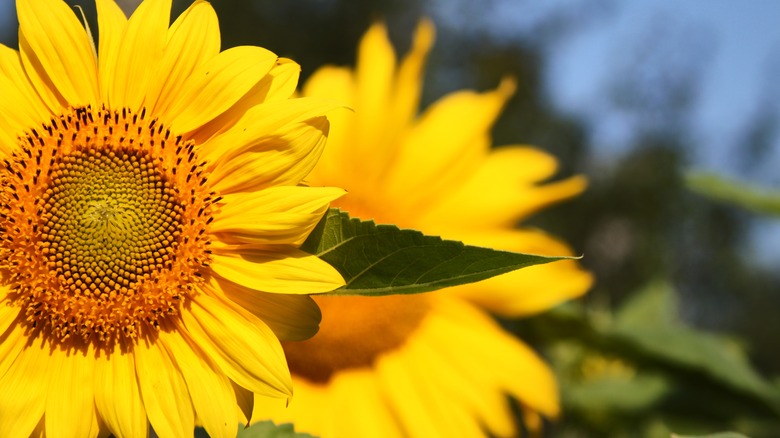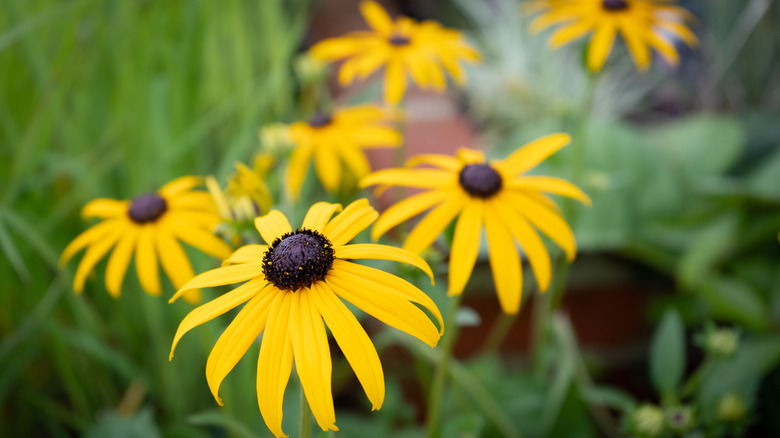Why Black Eyed Susans And Sunflowers Are Bad Garden Companions
Sunflowers and black-eyed susans, both garden favorites, are a treat for the eyes. Their vibrant colors and striking presence add charm to any garden space. However, gardeners are advised against planting them adjacent to one another. There are two pivotal reasons for this caution. First, both these flowers vie for similar environmental essentials, be it sunlight, water, or nutrients. When planted close, this shared need creates competition, potentially stifling their natural development and possibly impeding their growth, resulting in fewer blossoms.
Additionally, their proximity can lead to overshadowing, depriving one another of vital sunlight. They also both hail from the Asteraceae family. This botanical kinship makes them susceptible to cross-pollination, leading to the potential emergence of hybrid offspring. Such hybrids might not retain their parent plants' unique and beloved characteristics, making the resulting blooms a surprise in form and color, which could be disappointing for enthusiasts seeking consistency throughout their garden.
How to successfully grow black eyed susans and sunflowers separately
Black eyed susans and sunflowers, two radiant garden staples, share some common care essentials but differ in planting times. For black eyed susans, you can opt to either seeds six weeks before the predicted last frost or seedlings once a frost is no longer a threat. They thrive in locations that guarantee at least six hours of direct sunlight daily. Black eyed susan plants flourish in well-draining soils, whether moist or dry, and can comfortably grow in loam, clay, or sandy soils as long as they don't remain perpetually waterlogged. As they take root, they need consistent watering. Once established, their resilience shines through as they can endure drought spells, although periodic watering in such conditions remains beneficial. Maintenance is straightforward — deadhead faded blooms for continuous flowering and prune back to around 6 inches during autumn to support the following year's growth.
Sunflowers, with their iconic golden hues, should be sown after the last frost of spring. They have a voracious appetite for sunlight, requiring a solid six hours or more daily. Their soil preference is well-draining with a pH ranging between 6 to 7.5. These sun-chasers need regular watering, especially when the weather turns dry. For maintenance, like black eyed susans, deadheading will lead to more blossoms, and a fall trim prepares them for a robust return the following season. Although there isn't a set recommendation, ensure both types of plants have enough space between them so as not to compete for sun and nutrients and avoid cross-pollination.

